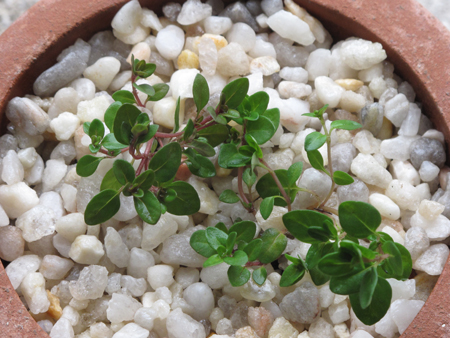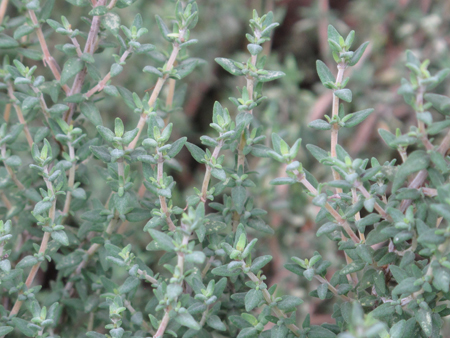Thyme, Wild and Tame
From right to left: A small start of wild or creeping thyme, a native of Northern Europe, in a terra rossa pot; detail of a planting of common or garden thyme, indigenous to the Western Mediterranean, growing in a sunny bed under the parapet wall in Bonnefont cloister. Although these two plants are easily distinguished in the garden, it can be difficult to know which of several species of thyme is under discussion in ancient and medieval sources.
There are hundreds of?? species in the genus Thymus, and a large and confusing array of hybrids and cultivated forms.??Ancient and medieval sources agree on the heating and drying properties of thyme, which is still greatly valued for its antibacterial and antifungal properties, but the species known in the European Middle Ages were not those of the ancients. The attempt to equate the plants discussed by Dioscorides in the De Materia Medica with more familiar species would occupy botanists well into the Renaissance.


